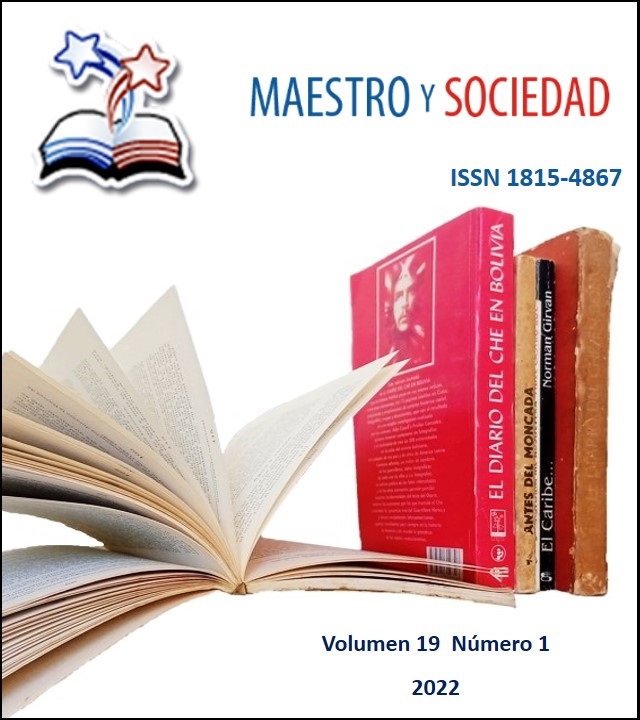The use of ICTs and Multiple Intelligences in Upper Basic and Baccalaureate students
Array
Keywords:
Multiple intelligences, information, communication, technologies, meaningful learningAbstract
This research on the use of Information and Communication Technologies (ICTs) and Multiple Intelligences (IM). It arises from the need to know how the different intelligences of children and young people can be used in the classroom, enhancing them through ICTs as tools that have changed educational, social and economic environments worldwide. As such, the proposed objective is to apply ICTs for the development of IM in Upper Basic and Baccalaureate students of the Narciso Cerda Educational Unit. For this work the inductive, deductive and statistical method is used, it is there that through the use of the survey carried out to teachers and students, it was possible to verify that the largest number of teachers do not use ICTs so that the class is dynamic. In addition, the need for teacher training in the use of ICTs to enhance the IM of students is ratified. In conclusion, it is evident that the use of ICTs is necessary for the development of IM in the students of the Narciso Cerda Maldonado Educational Unit.
References
2. Cabás, K. (2017). Vista de Teorías de la inteligencia y su aplicación en las organizaciones en el siglo XXI: una revisión | Clío América. http://revistas.unimagdalena.edu.co/index.php/clioamerica/article/view/2445/1805
3. Castro, S. (2017). Las TIC en los procesos de enseñanza y aprendizaje. https://www.redalyc.org/pdf/761/76102311.pdf
4. Congreso Nacional. (2017). Código de la Niñez y la Adolescencia. https://www.igualdad.gob.ec/wp-content/uploads/downloads/2017/11/codigo_ninezyadolescencia.pdf
5. Gómez, L., Directora, F., Martín, B., & Belén, A. (2019). Análisis del uso de las Inteligencias Múltiples en las aulas de Educación Infantil Analysis of the use of Multiple Intelligences in Early Childhood Education Classrooms Trabajo Fin de Grado.
6. Gómez, Luz. (2020). Importancia de las TIC en la educación básica regular - Educrea. https://educrea.cl/importancia-de-las-tic-en-la-educacion-basica-regular/
7. Islas Torres, C. (2018). La implicación de las TIC en la educación: Alcances, Limitaciones y Prospectiva / The role of ICT in education: Applications, Limitations, and Future Trends. RIDE Revista Iberoamericana Para La Investigación y El Desarrollo Educativo, 8(15), 861–876. https://doi.org/10.23913/ride.v8i15.324
8. Rodríguez, M. (2019). Importancia de las TICS en la educación. http://ticsenlaeducacion-yaneth.blogspot.com/
9. Lexis. (2017). Código de la niñez y adolescencia. https://www.igualdad.gob.ec/wp-content/uploads/downloads/2017/11/codigo_ninezyadolescencia.pdf
10. LEXIS. (2015). Constitución de la República del Ecuador. https://www.wipo.int/edocs/lexdocs/laws/es/ec/ec030es.pdf
11. Ministerio de Educación. (2017). Ley Orgánica de Educación Intercultural. https://educacion.gob.ec/wp-content/uploads/downloads/2017/05/Ley-Organica-Educacion-Intercultural-Codificado.pdf
12. Rodríguez Jiménez, A., & Pérez Jacinto, A. (2017). Métodos científicos de indagación y de construcción del conocimiento. Revista Escuela De Administración De Negocios, (82), 175-195. https://doi.org/10.21158/01208160.n82.2017.1647
13. Sánchez Duarte, E. (2008). Las tecnologías de información y comunicación (tic) desde una perspectiva social.
14. Suárez, J. (2010). Inteligencias múltiples: Una innovación pedagógica para potenciar el proceso enseñanza aprendizaje. http://ve.scielo.org/scielo.php?pid=S1316-00872010000100005&script=sci_arttext
15. Taborda, D. (2017). Inteligencias múltiples y su relación con el uso de las TIC en el aula de clase. Reflexión académica en Diseño y Comunicación, 211-217. https://fido.palermo.edu/servicios_dyc/publicacionesdc/archivos/746_libro.pdf
16. UNESCO. (2019). La Teconología en la Educación. https://es.unesco.org/themes/tic-educacion
Published
How to Cite
Issue
Section
License
This journal provides immediate open access to its content, based on the principle that offering the public free access to research helps a greater global exchange of knowledge. Each author is responsible for the content of each of their articles.



























 Universidad de Oriente
Universidad de Oriente 